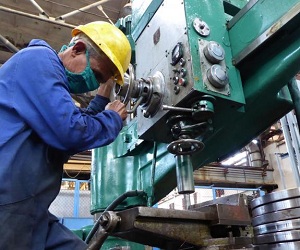 Despite the ravages of the blockade and the impact of COVID-19, Cuba has not renounced economic growth of approximately 6% in 2021, reported Alejandro Gil Fernandez, deputy prime minister and head of Economy and Planning, in an update on the economy’s performance in the first four months of the year.
Despite the ravages of the blockade and the impact of COVID-19, Cuba has not renounced economic growth of approximately 6% in 2021, reported Alejandro Gil Fernandez, deputy prime minister and head of Economy and Planning, in an update on the economy’s performance in the first four months of the year.
He pointed out that the Gross Domestic Product declined in 2020 on the order of 11%, thus any modest growth does not indicate an increase in the level of activity, since the economy will remain below what was achieved in 2019.
To support this projection, the gradual recovery of tourism is expected, projecting the arrival of close to 2.2 million international visitors, along with positive results in nickel exports and telecommunication services.
Alejandro Gil stated that the blockade’s pressure continues, constituting the main obstacle to country’s development, with an impact this last year exceeding 5.5 billion dollars, and over the most recent five-year period, 17 billion.
Such figures, he emphasized, represent between 12 and 15 million pesos per day and have an impact on all areas, especially healthcare, public transportation, water infrastructure and foreign investment.
Regarding the COVID-19 battle, he reported that associated expenses have already surpassed 300 million dollars, while the state budget has allocated some two billion pesos. However, he added, the indirect cost is much higher, given the necessary paralysis of some productive activities and services.
Regarding the monetary re-ordering task, the Minister reiterated that, although there have been design and implementation problems, the people have been heard, and mistaken decisions have been rectified, and some positive aspects can already be noted, which should become more visible in the future.
He mentioned that exports of goods have grown compared to the same period in 2020; more than 150,000 new jobs have been created; and a more effective and transparent system for measuring costs is evident.
Alejandro Gil commented that some 1,300 companies are generating earnings at the end of the period, while a few more than 500 show losses. This latter number, he said, is higher than in other periods, although many were in the same condition prior to the re-ordering, but were unaware of the fact, as a result of former practices.
Addressing the importance of the new monetary order, he explained that delaying it or applying it partially would have been more traumatic and destabilizing, pointing out that there are problems, especially limited supply in the market, which should not be blamed on the re-ordering.
The Minister remarked that the official exchange rate of the U.S. dollar to the Cuban peso of 1×24 is maintained, although in the informal market, given the impossibility of making foreign currency available to the population, the rate oscillates between 50 and 60 pesos on the informal market. He acknowledged that the country’s severe financial limitations have not allowed resolution, in the immediate term, of limited supply of basic goods on the market.
Despite of this situation, he stated, the Cuban government has not resorted to neoliberal or “shock therapy,” but is working on the adoption of strategies to increase food production, improve efficiency and strengthen state enterprises, as well as their links with other economic actors.
(Taken from Granma)